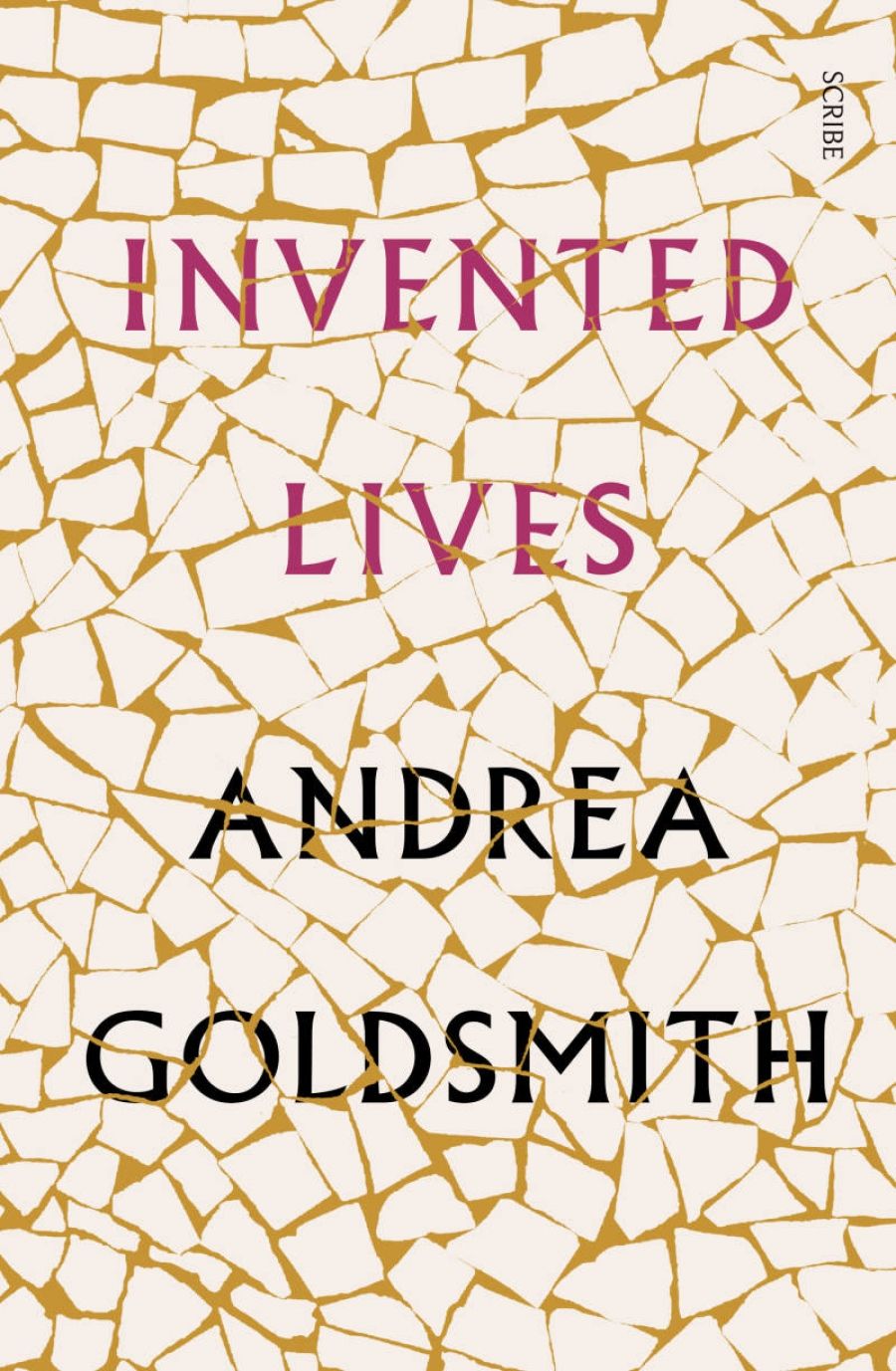
- Free Article: No
- Contents Category: Fiction
- Custom Article Title: Francesca Sasnaitis reviews <em>Invented Lives</em> by Andrea Goldsmith
- Review Article: Yes
- Online Only: No
- Custom Highlight Text:
John Berger describes emigration as ‘the quintessential experience of our time’ (And Our Faces, My Heart, Brief as Photos, 1984), and gives credence to the concept that geographic and psychological exile is pervasive to the human condition. ‘No one willingly chooses exile – exile is the option when choice has run out,’ says the ...
- Book 1 Title: Invented Lives
- Book 1 Biblio: Scribe, $32.99 pb, 336 pp, 9781925713589
 Andrea Goldsmith (photograph supplied)
Andrea Goldsmith (photograph supplied)
Shattered by grief, feeling punished even by the inclement Leningrad winter, Galina stumbles in the icy street. Andrew Morrow comes to her aid. A young Australian mosaicist studying the spectacular Church on of the Saviour on the Spilled Blood, he is Galina’s counterpart in this novel, which bristles with pairings and dichotomies. Despite a punishing stutter and inherent shyness, Andrew manages to give her his Melbourne contact details; he is already smitten. Their serendipitous encounter prompts Galina to trade America for Australia as her final destination.
The 1980s in Australia might be characterised as the era of Azaria Chamberlain, the Ash Wednesday bushfires, and AIDS. The iconic Grim Reaper advertisement, which appeared on billboards in 1987, will provoke a significant confrontation later in Invented Lives. Faith in Australia’s immunity to mass violence will be shaken by the Russell Street bombing and the Hoddle Street and Queen Street massacres. The times, they are a-changin’, but Galina understands little of this. ‘Defined almost exclusively by her foreignness’, she experiences the loss of identity common to reluctant exiles, who must reinvent themselves if they are to survive the transition into a foreign language, environment, and culture.
Culture, and the clash of cultures, play a crucial role in the narrative of Invented Lives, as do love, transgression, and the paradox of a past both inaccessible and inescapable.
Galina is steeped in a history of anti-Semitism going back to tsarist times; with forebears who lived through the pogroms of 1918 and 1919, and the failure of ‘the great socialist revolution’. She has an intimate understanding of ‘the essence of terror … helplessness’ – she lost both grandparents to the Great Purge of 1937–38; her uncle Misha may have been responsible for their arrests. The siblings Misha and Lidiya make another conflicted pair: he, a true believer enamoured of the party line; she, a member of the intelligentsia, questioning and unconvinced by Bolshevik propaganda. Galina cannot begin to explain Soviet brutality to Australians (most of whom don’t seem interested anyway), nor how living in fear has formed her. In Galina, Australians see only ‘an amputated version of who she believe[s] herself to be’.
Two years after meeting in Leningrad, long after Andrew has given up hope of ever seeing her again, Galina rings him. She is desperate for the familial connection that Andrew can provide. Coming from a milieu that eschews public displays of affection, Galina is moved by the overtly loving relationship of Andrew’s parents, Sylvie and Leonard. She sees the Morrows as typically middleclass: comfortable, well-educated, cultivated. Later, the reader will find out the extent of the cracks beneath the surface of their happy marriage.
The women’s liberation movement seems to have passed Sylvie by, but Sylvie has a guilty passion: she lives vicariously through the letters of strangers that have fallen into her possession. Leonard has put aside his youthful ambition to be a poet for the sake of a conventional (and convenient) family life. The arts are valued only as recreation, a distraction from the importance of material and commercial success. ‘No one can do everything they want, nor can they have everything they desire. Every choice is another denied,’ thinks Leonard, at pains to deny his true nature.
Andrew and Galina’s friendship is at an impasse. Galina chooses to ignore the obvious, and any declaration of intent is stymied by Andrew’s self-consciousness. Her Russian soulfulness, loaded with the gravitas of survival, makes Andrew seem lightweight, if not naïve. To her assertion (also the opinion of the author) that art can save lives, he retorts: ‘Bombs kill. Starvation kills. Torture kills. Natural disasters kill. Art never stopped any of this.’ Only privately, can Andrew admit that art has the capacity to stimulate and inspire, to offer solace and spiritual courage.
Andrew’s speech impediment and Galina’s emigrant status are Goldsmith’s most obvious isolating mechanisms. For the supporting cast of Kogans and Morrows, isolation comes in the form of secrets, compromises, and the lies that are told to ensure a tranquil existence.
‘I stand as a witness to the common lot, / survivor of that time, that place,’ wrote Anna Akhmatova in Requiem, affirming the duty of a writer to bear witness and the capacity of art to effect change, to nourish and sustain. Goldsmith may not have realised such lofty aspirations with Invented Lives, but her version of the 1980s speaks to a humanitarian ethos that transcends any particular period or culture and is certainly pertinent in the current political climate.


Comments powered by CComment